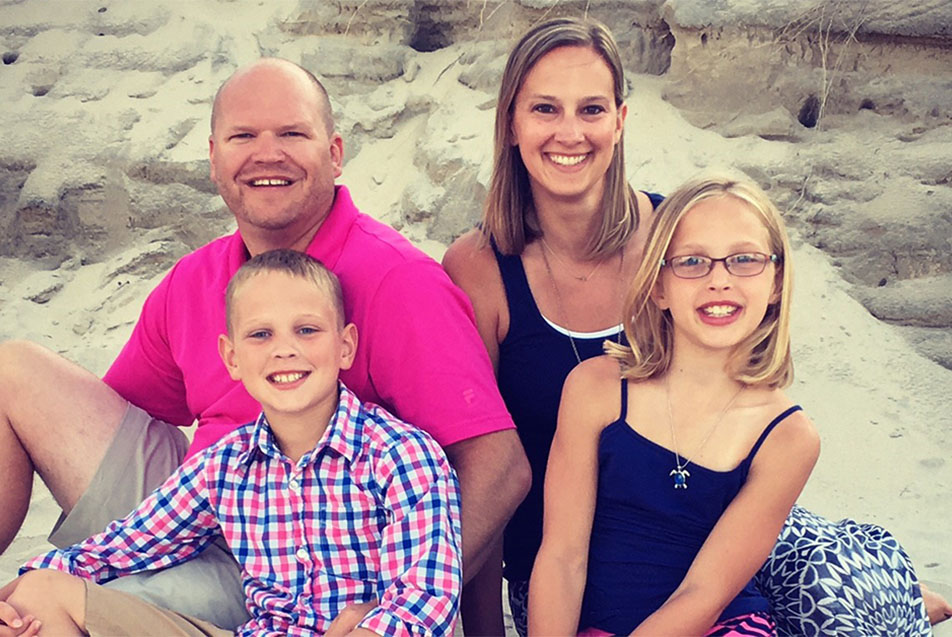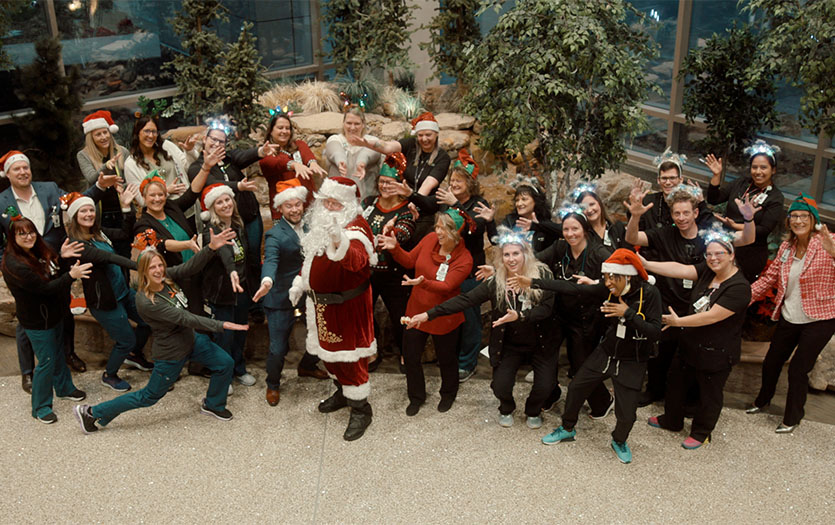
When Parkview announced the arrival of G-EO Evolution™ at Parkview Hospital Randallia back in May, there was a lot of excitement throughout the health care system and patient community about what this technology would mean for rehabilitation. The robotic-assisted gait trainer – the only one in the state of Indiana – truly facilitates faster recovery for those with neurological and orthopedic impairments, as well as more capacity for the team of talented therapists providing care. Among them, Nicole Walter, who has displayed the undeniable results that come from pairing compassion and exceptional care with the right tools for the job.
Her approachable demeanor and ceaseless dedication to her patients has earned Nicole a great deal of respect from her coworkers. Her familiarity and expertise with the G-EO machine has made her a leader in cutting-edge techniques for treatment. Finding that perfect balance of empathy and patient empowerment makes Nicole one of the passionate, sharp, extremely skilled People of Parkview.
Name: Nicole Walter, MPT, CSRS, CBIS
Title: Lead Physical Therapist, Parkview Hospital Randallia Outpatient Therapy
Describe your education and career journey:
I graduated with my bachelor’s degree from Bowling Green State University in 2001. My PT program was a 3 + 3 program, so I completed my master’s degree from the Medical College of Ohio in December of 2002. I completed one of my clinical rotations here at Parkview, along with volunteering here while I was in high school. When I graduated, I was so excited to have the opportunity to work here at Parkview. I worked in inpatient therapy for 11 years, then transitioned to outpatient therapy at the Randallia clinic in 2014.
What inspired you to pursue this profession?
I thought I wanted to work in athletic rehab, which is why I chose this profession. After completing my clinical rotation here in the inpatient rehab unit, I found that my true passion was neuro rehab.

What is a typical day like for you?
I generally see 7-8 patients per day, most of whom have a neurologic diagnosis such as stroke, spinal cord injury, or brain injury. We assist with everything from relearning how to walk, core strengthening, balance training, and sometimes even high level activities like running and jumping.
What would you say is the most challenging aspect of your profession?
All of my patients have had life-altering events happen to them. It’s challenging to try to provide sympathy and understanding, while knowing that working hard and pushing them to achieve their goals is necessary for them to achieve their best outcomes.
What is the most rewarding part of your job?
It’s so rewarding to see people be able to do things they couldn’t do before they started therapy. I went to one of my patient’s son’s high school graduation a couple years ago and helped him stand when his son graduated. That had been a goal of his for some time and it was so amazing to see him achieve that goal.
We recently starting using a G-EO gate trainer. What is that?
The G-EO is a robotic assisted gait device. It is amazing because it has the ability to be completely individualized for each patient that uses it. The robot can be adjusted to each patient’s step length and gait speed. It can also be adjusted to provide the exact amount of assistance or resistance each patient needs, from the robot doing all the work for walking to providing resistance throughout the gait cycle. The G-EO can also be used for practice going up and down stairs.
What type of patients are using this?
We are using it mainly for our neurologic population, including patients that have CVA, TBI, SCI, MS, Parkinson, CP. The great thing about the G-EO being located at Randallia is that our inpatients also have access to the G-EO, so our patients that are in inpatient rehab or the continuing care center can begin using the G-EO while they’re here, and then continue with it when they transition to outpatient therapy.

What are the benefits of G-EO for patients compared to traditional therapy?
The G-EO is a great adjunct to traditional therapy. It is used as a therapy intervention, and can help our patients take more steps than they can during a traditional treatment. However, the G-EO is most effective when used in conjunction with traditional interventions. Each time the patients use the G-EO, we follow it with overground walking and try to have our patients carry over what they have learned.
How does this technology help your team?
This provides an invaluable asset, because it helps our low-level patients take more steps than we can physically help them take. It supports their body weight in a harness, which allows more movement and eliminates risk of falls.
What is something you hope to accomplish in your career?
Eventually, I would love to teach in a PT program. However, I love patient care so that probably won’t happen for a long time!
Is there one interaction with a patient that stands out to you?
There are so many it’s hard to pick just one! Probably one of my favorite interactions was helping my patient (who has a spinal cord injury) stand at his son’s high school graduation. His son didn’t know we had been working on that, so it was a big surprise for him. That was pretty amazing.
If you could tell people to read one book in their lifetime, which would it be?
That is like asking me to pick a favorite child! I love to read and enjoy many different types of books. I would probably have to pick the Harry Potter series. My kids are reading them now, and it’s been so much fun to share that experience with them.

What would we find on your bucket list and what do you plan to check off next?
My family is planning a trip to Disney next year. We’ve never been and I can’t wait! I would also love to travel out west some time.
What’s the best piece of advice you’ve ever received?
I have a quote from a BGSU alumni magazine that I’ve had on my desk ever since I started working. It says:
“I expect to pass through this work but once, any good thing therefore that I can do, or any kindness that I can show to any fellow creature, let me do it now; let me not defer or neglect it, for I shall not pass this way again.”
I feel like that is good advice for anyone working in health care. It can be so easy to get caught up in our day-to-day activities, and I think it’s good to remember those words.



